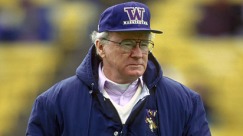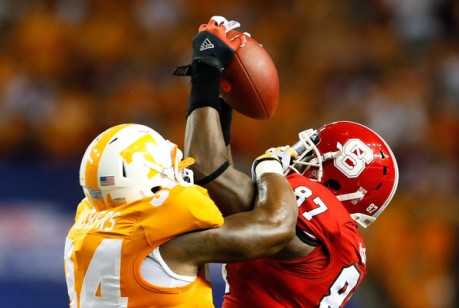Don James, known as the Dawgfather of Washington football, turns 80 in December. He led the Huskies for 18 seasons from 1975-1992, compiling a 153-57-2 record. The Huskies won six Pac-8 and Pac-10 conference championships under James and shared the 1991 national championship with Miami (Fla.), James’ alma mater. He won national coach of the year awards in 1977, 1984 and 1991.
James retired under protest of NCAA sanctions against Washington in August 1993. It had been revealed that multiple players had received improper benefits during the 1992 season. The Seattle Times and Los Angeles Times investigation eventually led to charges from the NCAA of lack of institutional control over Washington’s handling of recruiting funds for on-campus visits.
It should be noted that James and his coaching staff weren’t specifically cited as having broken any rules, but the sanctions leveled against the program were significant. In the end, Washington received a 2-year bowl ban and 1-year television ban.

James and Pinkel gather for the 40th anniversary of Kent State’s 1972 MAC Championship team last week. Pinkel, Nick Saban and NFL Hall of Famer Jack Lambert played on the team.
Before James landed in Seattle, he led Kent State from 1971-1974. There, he guided his football program to the 1972 Mid-American Conference (MAC) championship and coached Pittsburgh Steelers linebacker and NFL Hall of Famer Jack Lambert as well as two future SEC head coaches in Alabama’s Nick Saban (defensive back) and Missouri’s Gary Pinkel (tight end). Kent State recently honored that 1972 team with a 40th anniversary celebration of its MAC championship.
Pinkel, who served as James’ offensive coordinator at Washington from 1984-1990, has come up multiple times during Washington’s most recent head coaching vacancies. Washington was interested in the then-Toledo head coach after the 1998 season, but hired then-Colorado head coach Rick Neuheisel instead. Washington fired Neuheisel in 2002, but Pinkel had just accepted the Missouri job in 2001. Interest peaked again for Pinkel and Washington in 2008 before the Huskies hired USC assistant and current head coach Steve Sarkisian.



